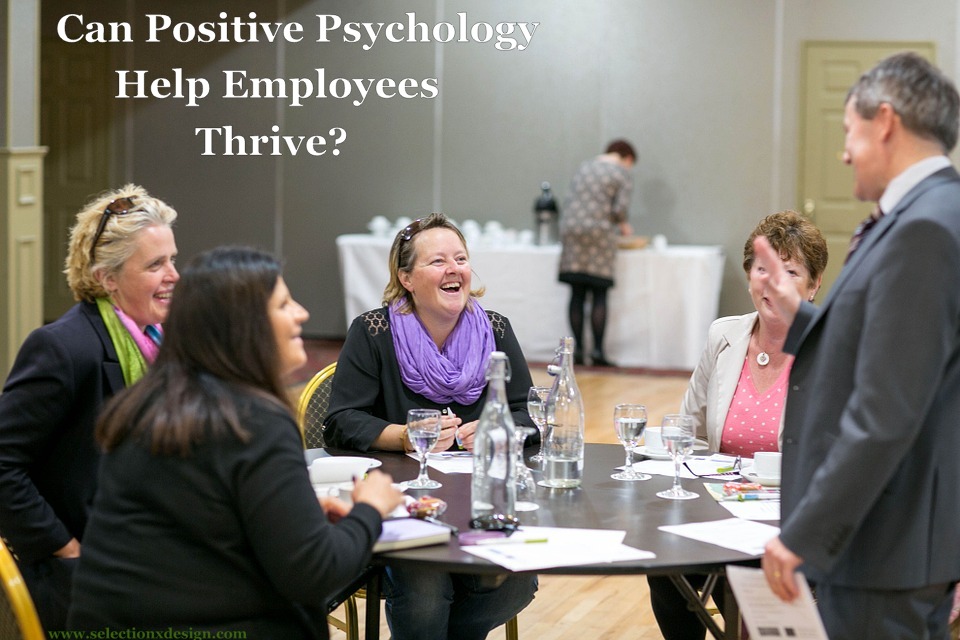Professor Martin Seligman recently gave a talk entitled ‘Positive Psychology: Past, Present, Future’ at Trinity College Dublin. His impressive presentation focused on his PERMA model outlining five essential elements for lasting well-being: Positive emotion, Engagement, Relationships, Meaning, and Accomplishment.
Positive psychology, which examines the ways we can become happier and more fulfilled, is fascinating. Focusing on the positive aspects of personal development has a great deal of appeal and potential value for individuals. But can positive psychology help employees thrive in the workplace? How might knowledge of what makes people happy improve employee performance, motivation, and engagement?
Positive psychology is a relatively new field founded on the belief that people want to lead meaningful, fulfilling lives. It studies the strengths that allow individuals to thrive and focuses on building positive qualities. The underlying principles of positive psychology point to some of the ways it may be used to employees’ advantages, simultaneously benefiting employers who enhance individuals’ experiences of work.
1. Facilitate connections among employees.
Socialization and the formation of connections with those around us can be traced to evolutionary advantages. According to research, the more social we are, the happier and healthier we are . Encouraging socialization among employees can increase workplace satisfaction. Team-building events, competitions, and other activities can encourage relationships while enhancing productivity and performance.
2. Manage morale via socialization.
We’re ‘wired’ to connect through socialization, and research also shows that moods are contagious. Businesses and organisations may manage workplace morale by strategically placing staff in teams to facilitate high energy, satisfaction and performance.
3. Foster a fun work environment.
Research repeatedly shows, a work environment that is fun may enhance morale, satisfaction and performance among employees.
4. Express gratitude.
Concrete, specific expressions of gratitude do more than reinforce behaviour. Honest positive feedback expressed as gratitude can enhance the mood and self-esteem of an employee, reduce stress, and activate the more productive, creative parts of the individual’s brain.
5. Set meaningful SMART goals.
Set goals for employees that utilise their skills and align with their interests and values, and structure them to be SMART (Specific, Measurable, Attainable, Relevant and Timely). Aligning projects in this way enables employees to utilise their own motivations and enthusiasm. They’ll be more likely to thrive with the investment of energy.
Positive psychology assumes that most of us strive to better ourselves. Instead of focusing on our failings or what needs to be ‘fixed,’ it’s an approach geared toward what’s flourishing. Martin Seligman and other researchers view work as an opportunity to experience higher levels of happiness–an opportunity organisations can help workers take advantage of to mutual benefit and reward. If you’d like to read more on positive psychology, visit PositivePsychology.org. You can find a blog series focusing on positivity in the workplace here.
Positive psychology and its focus on strengths rather than weaknesses in the workplace is not without critics. In our next post, we’ll examine some alternative points of view.
________________
Looking for an easy way to complete Occupational Test Training? Now’s the time to register for our April 2016 training dates. You can complete BOTH courses in just four days! If you have any questions about our training, please contact us.


